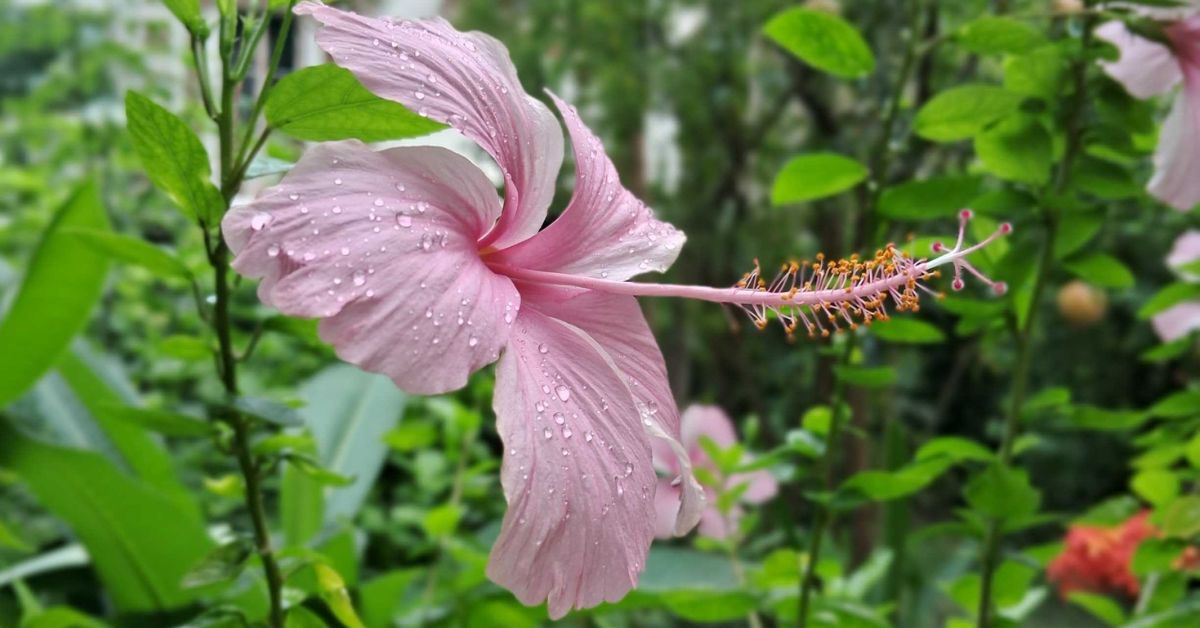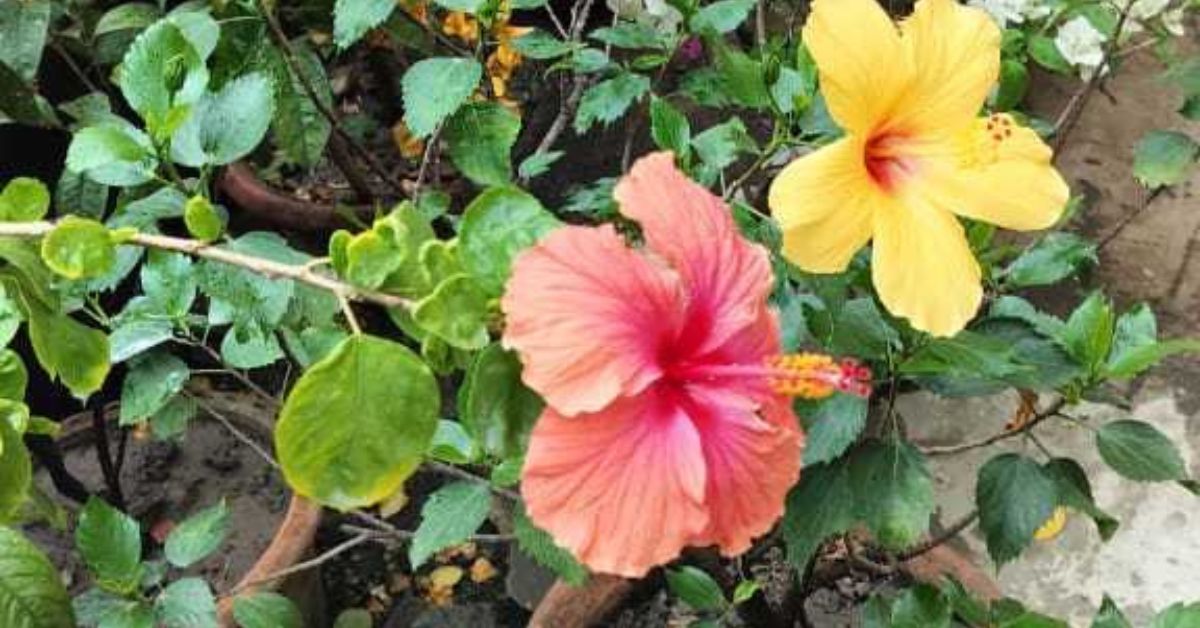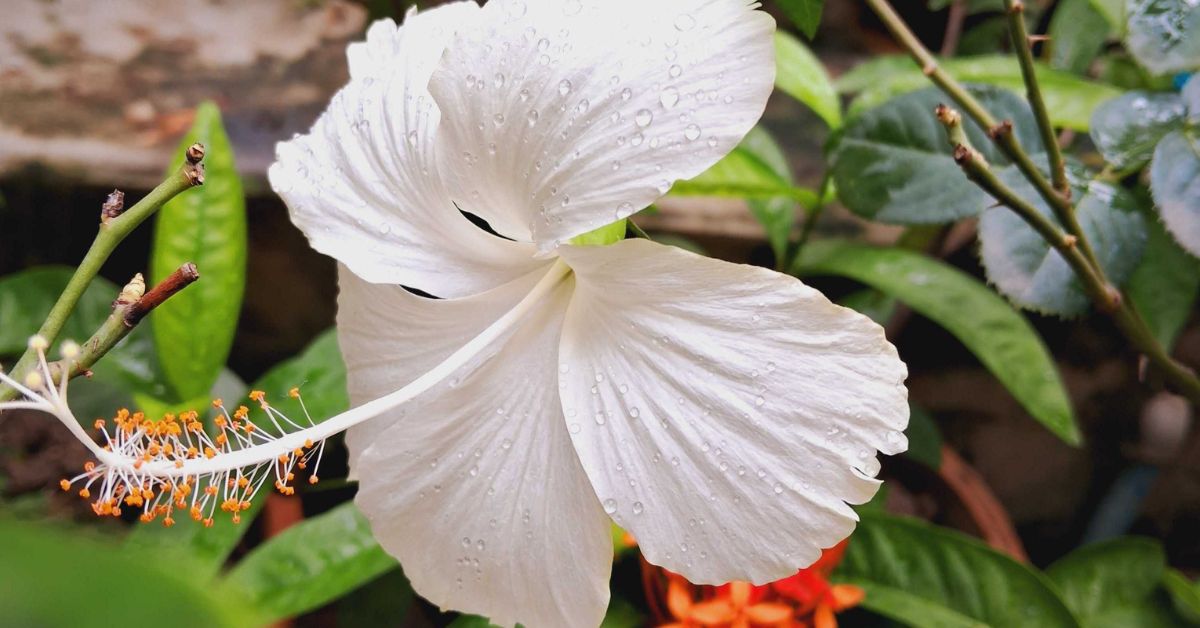How to Grow Hibiscus on Your Balcony Like A Pro With These 10 Tips
Here’s a fun fact to start you off — hibiscus isn’t just that bold, red showstopper you spot in temple garlands. Nope. This tropical beauty comes dressed to impress in a wardrobe of pinks, oranges, yellows, purples, and even whites. Used in daily pujas, hair oils, skincare, and even herbal teas, the humble hibiscus is a multitasker in the truest sense.
And the best part? You don’t need a sprawling garden to grow one. Even a small balcony can host this powerhouse plant with the right care.
So, whether you want to up your green game, keep your grandmother happy during aarti, or give your hair a natural boost, here’s how to grow hibiscus like a pro.
 Even a small balcony can host this powerhouse plant called hibiscus with the right care.
Even a small balcony can host this powerhouse plant called hibiscus with the right care.
10 steps to grow hibiscus on your balcony
1. Choose your variety wisely
There are two main types of hibiscus: Hibiscus rosa-sinensis (ornamental) and Hibiscus sabdariffa (used in teas and Ayurvedic treatments). The former blooms in vibrant colours and is most commonly grown at home. Choose the variety based on your end goal—beauty or benefits (or both).
2. Get the right pot
A 10–12-inch pot with drainage holes works best. Hibiscus loves room to spread its roots, so avoid tiny pots. Clay pots are a good choice as they allow air to circulate and excess moisture to escape.
3. Use well-draining soil
Mix garden soil with cocopeat and compost or manure in equal parts. Hibiscus doesn’t like wet feet, so avoid soil that clumps or holds too much water.
4. Give it lots of sun
Hibiscus is a sun worshipper. It needs at least five to six hours of direct sunlight daily to bloom happily. A south or west-facing balcony is ideal.
 Hibiscus needs at least five to six hours of direct sunlight daily to bloom happily.
Hibiscus needs at least five to six hours of direct sunlight daily to bloom happily.
5. Water smartly
Keep the soil moist but not soggy. Water deeply when the top inch of soil feels dry. In summer, this could mean watering once every day. In cooler months, reduce the frequency.
6. Prune for more blooms
Don’t be afraid to give your plant a gentle haircut. Pruning encourages bushier growth and more flowers. Trim back leggy branches after a flowering cycle, ideally during spring or early monsoon.
7. Fertilise regularly
Feed your hibiscus once every two weeks with a balanced fertiliser. Organic options like banana peel compost or liquid seaweed work wonders. Avoid high-nitrogen fertilisers; they promote leaves, not blooms.
8. Watch out for pests
Aphids, mealybugs, and spider mites love hibiscus just as much as you do. Keep them at bay with neem oil spray or a mild soap-water solution. Regular inspection is key.
9. Repot every one to two years
Once your plant outgrows its pot, give it a new home. Repotting refreshes the soil and gives roots more space to breathe. Do this in spring for best results.
 Feed your hibiscus once every two weeks with a balanced fertiliser.
Feed your hibiscus once every two weeks with a balanced fertiliser.
10. Show it some love
Yes, this counts too. Hibiscus plants respond well to regular attention. Clean their leaves, rotate the pot for even growth, and pluck spent flowers to encourage new buds.
Key features to keep in mind
- Temperature: Thrives best between 20°C–35°C. Protect it from frost and harsh winds.
- Humidity: Loves slightly humid air. Mist it occasionally if your area is dry.
- Leaf drop: Sudden leaf fall is a cry for help, often due to overwatering or lack of sunlight. Adjust accordingly.
- Flowering pattern: Most blooms last only a day, but don’t worry, hibiscus makes up for it with quantity over duration.
Why everyone loves hibiscus: its benefits
- Boosts hair health: Hibiscus leaves and flowers are Ayurvedic staples for hair masks and oils. They help reduce dandruff, strengthen roots, and promote growth.
 There are two main types of hibiscus: Hibiscus rosa-sinensis (ornamental) and Hibiscus sabdariffa (used in teas and Ayurvedic treatments).
There are two main types of hibiscus: Hibiscus rosa-sinensis (ornamental) and Hibiscus sabdariffa (used in teas and Ayurvedic treatments).
- Great for the skin: Crushed hibiscus petals are rich in antioxidants and natural acids that help in exfoliation and reducing hyperpigmentation.
- Good for the gut: Hibiscus tea made from dried petals is known for its digestive benefits, soothing acidity and aiding metabolism.
- Lowers stress: That same tea is believed to help regulate blood pressure and calm the nervous system.
If you’re looking to add a little colour, culture, and calm to your life, hibiscus is the perfect pick. It’s low-maintenance, deeply rewarding, and blooms with personality. Plus, every time you pluck a flower for your puja plate or hair oil ritual, there’s a tiny moment of pride in knowing you grew it yourself.
News